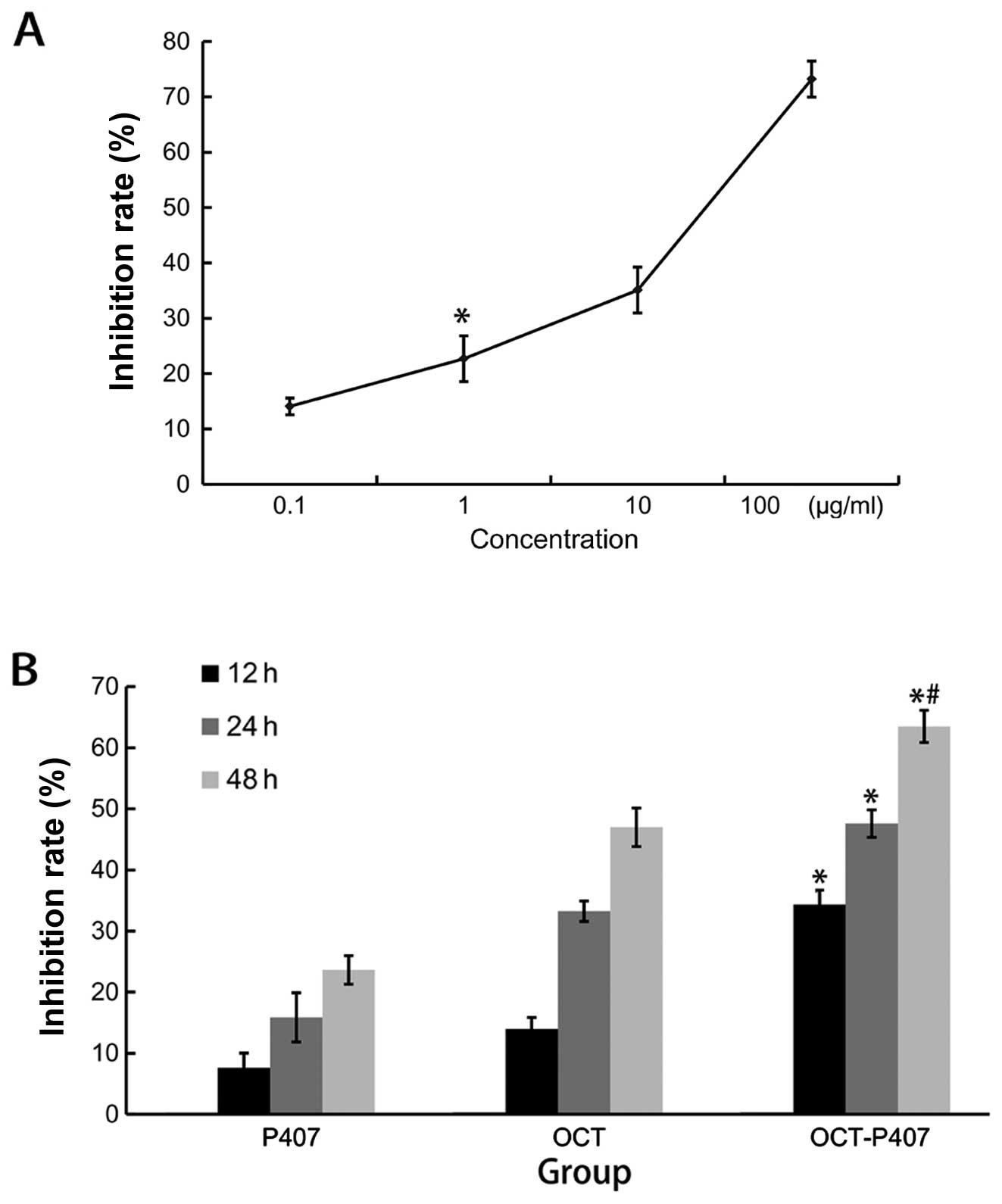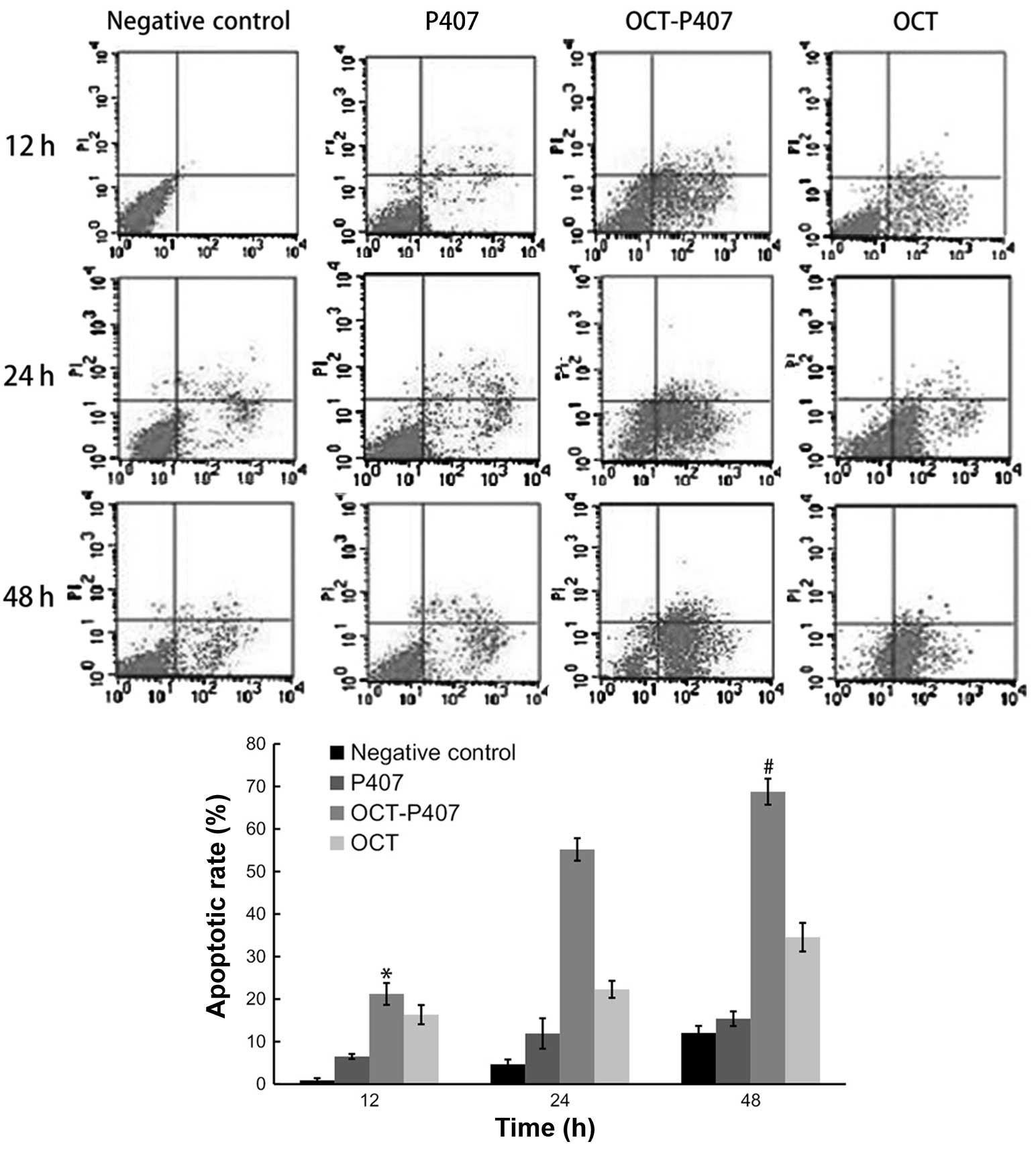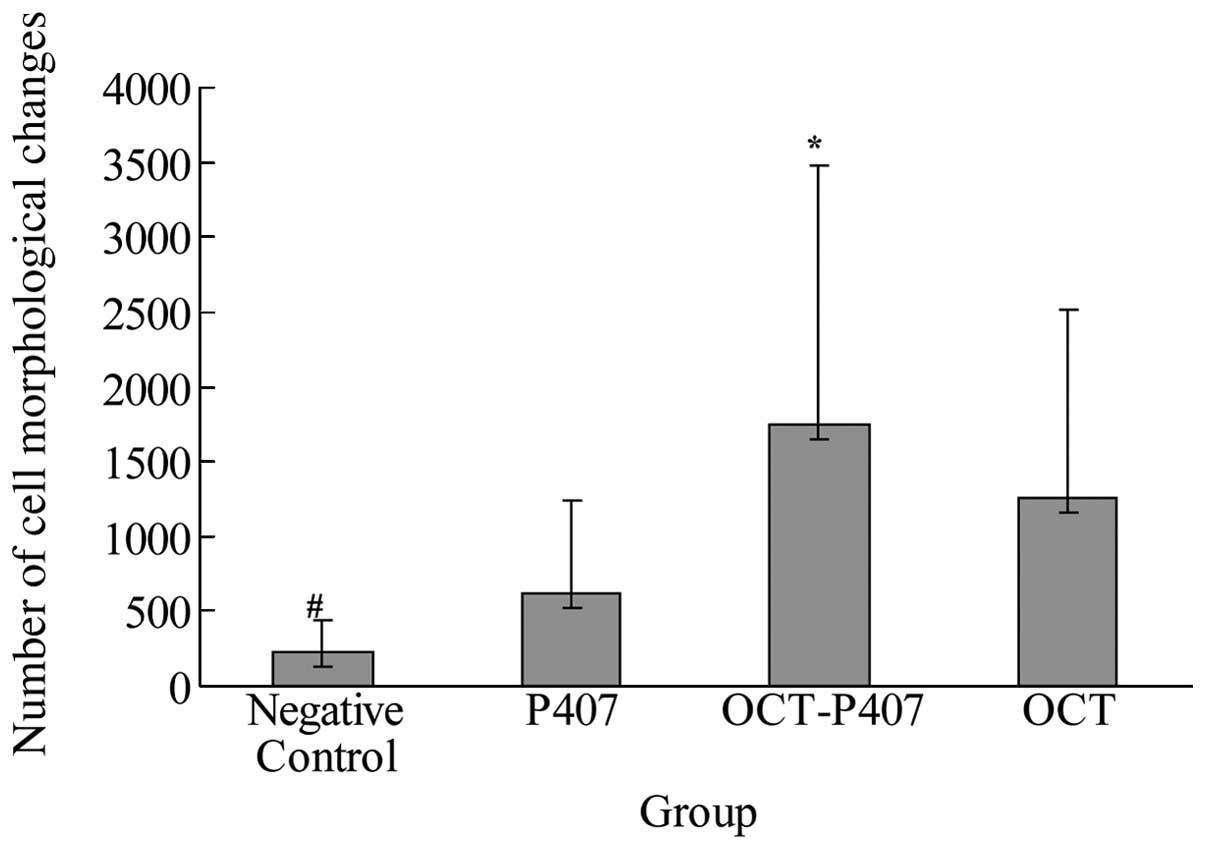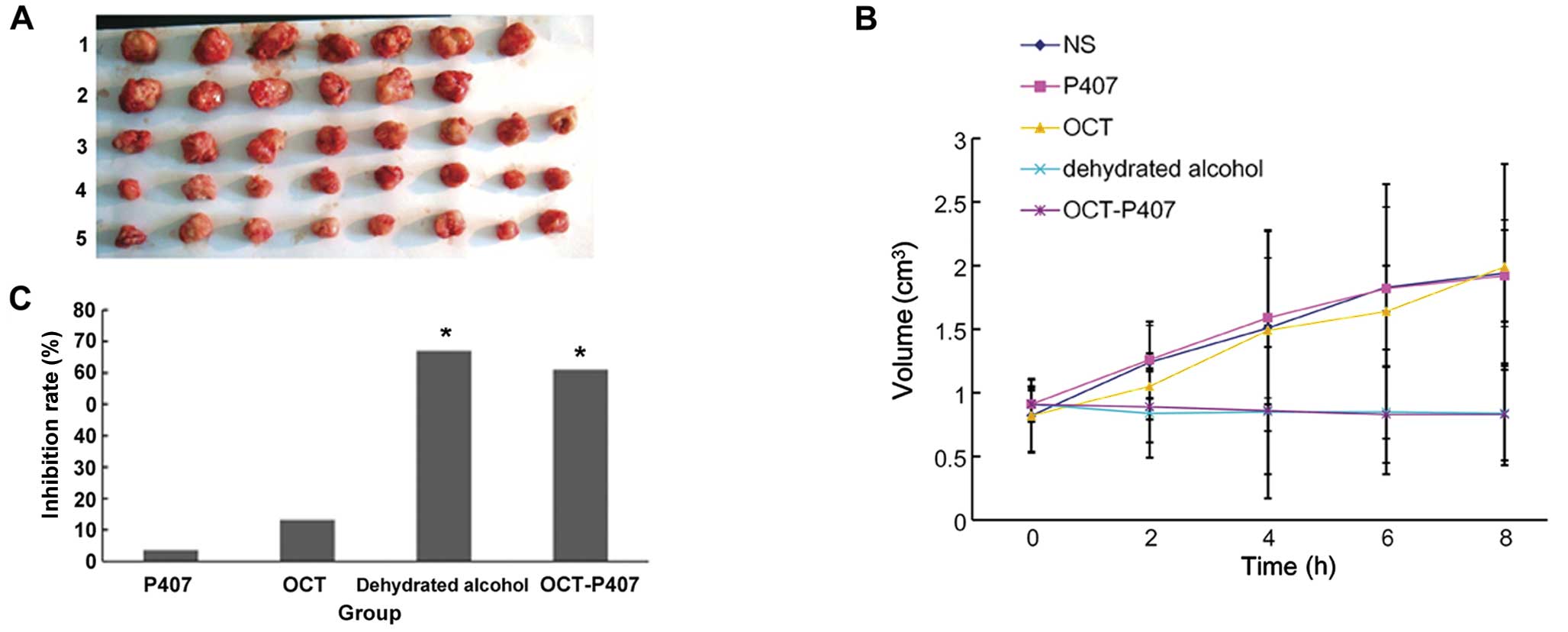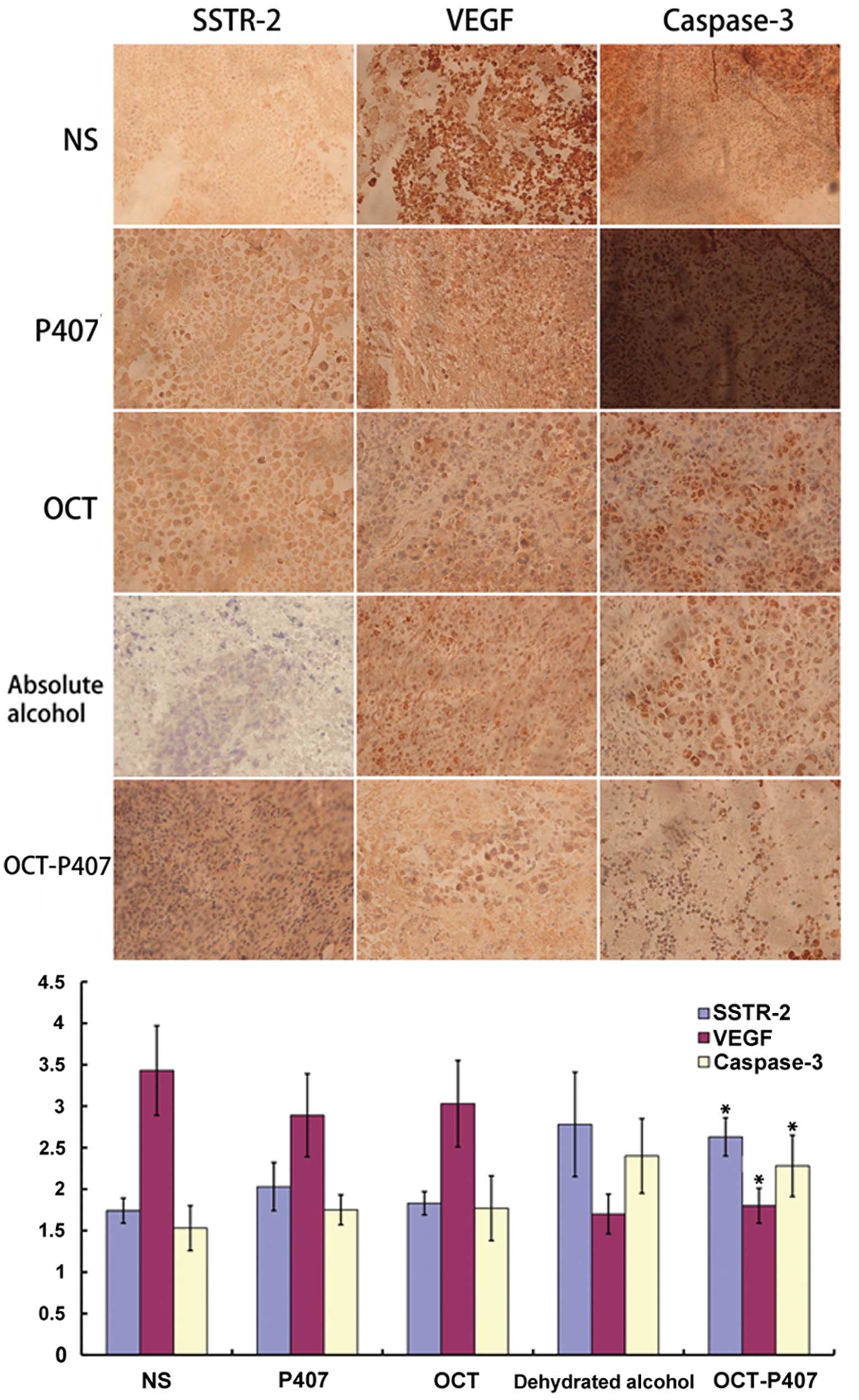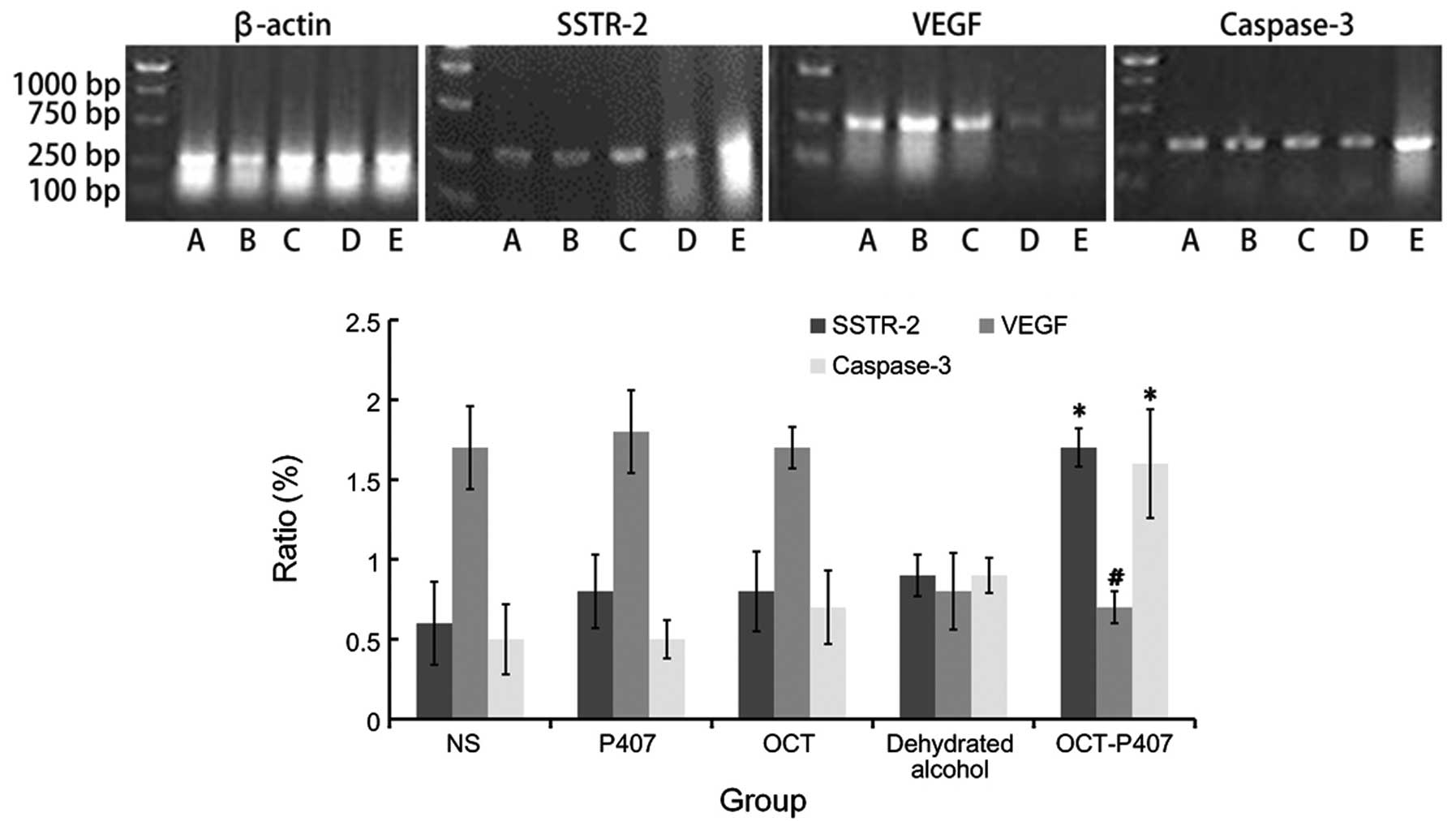|
1
|
Han KH and Park JY: Systemic treatment in
advanced/metastatic hepatocellular carcinoma in the era of targeted
therapy. J Gastroenterol Hepatol. 25:1023–1025. 2010. View Article : Google Scholar : PubMed/NCBI
|
|
2
|
Zhang ZM, Guo JX, Zhang ZC, Jiang N, Zhang
ZY and Pan LJ: Therapeutic options for intermediate-advanced
hepatocellular carcinoma. World J Gastroenterol. 17:1685–1689.
2011. View Article : Google Scholar : PubMed/NCBI
|
|
3
|
Bouza C, López-Cuadrado T, Alcázar R,
Saz-Parkinson Z and Amate JM: Meta-analysis of percutaneous
radiofrequency ablation versus ethanol injection in hepatocellular
carcinoma. BMC Gastroenterol. 9:312009. View Article : Google Scholar : PubMed/NCBI
|
|
4
|
Burton KR, O’Dwyer H and Scudamore C:
Percutaneous ethanol ablation of hepatocellular carcinoma:
periprocedural onset alcohol toxicity and pancreatitis following
conventional percutaneous ethanol ablation treatment. Can J
Gastroenterol. 23:554–556. 2009.
|
|
5
|
Danila M, Sporea I, Sirli R and Popescu A:
Percutaneous ethanol injection therapy in the treatment of
hepatocarcinoma-results obtained from a series of 88 cases. J
Gastrointestin Liver Dis. 18:317–322. 2009.PubMed/NCBI
|
|
6
|
Weijian F, Zan L, Suhong H, et al:
Destructive effect of percutaneous hydrochloric acid injection
therapy for liver cancer - a preliminary experimental and clinical
study. Gan To Kagaku Ryoho. 33:1852–1856. 2006.PubMed/NCBI
|
|
7
|
Castro DJ, Sridhar KS, Garewal HS, et al:
Intratumoral cisplatin/epinephrine gel in advanced head and neck
cancer: a multicenter, randomized, double-blind, phase III study in
North America. Head Neck. 25:717–731. 2003. View Article : Google Scholar : PubMed/NCBI
|
|
8
|
Kwak MK, Hur K, Yu JE, et al: Suppression
of in vivo tumor growth by using a biodegradable thermosensitive
hydrogel polymer containing chemotherapeutic agent. Invest New
Drugs. 28:284–290. 2010. View Article : Google Scholar : PubMed/NCBI
|
|
9
|
Bornschein J, Drozdov I and Malfertheiner
P: Octreotide LAR: safety and tolerability issues. Expert Opin Drug
Saf. 8:755–768. 2009.PubMed/NCBI
|
|
10
|
Guo TK, Hao XY, Ma B, et al: Octreotide
for advanced hepatocellular carcinoma: a meta-analysis of
randomized controlled trials. J Cancer Res Clin Oncol.
135:1685–1692. 2009. View Article : Google Scholar : PubMed/NCBI
|
|
11
|
Zhang J, Jin W, Wang X, Wang J, Zhang X
and Zhang Q: A novel octreotide modified lipid vesicle improved the
anticancer efficacy of doxorubicin in somatostatin receptor 2
positive tumor models. Mol Pharm. 7:1159–1168. 2010. View Article : Google Scholar : PubMed/NCBI
|
|
12
|
Wu LQ, Lu Y, Lu HJ, Zhao ZG and Yang M:
Efficacy of intra-tumor injection of Kang-Lai-Te in treating
transplanted hepatoma in rats. Hepatobiliary Pancreat Dis Int.
3:580–584. 2004.PubMed/NCBI
|
|
13
|
Liu S, Sun MZ, Tang JW, Wang Z, Sun C and
Greenaway FT: High-performance liquid
chromatography/nano-electrospray ionization tandem mass
spectrometry, two-dimensional difference in-gel electrophoresis and
gene microarray identification of lymphatic metastasis-associated
biomarkers. Rapid Commun Mass Spectrom. 22:3172–3178. 2008.
View Article : Google Scholar
|
|
14
|
Yu SJ, Kang XH, Zhang JN, et al: Effects
of small interfering RNA targeting heparanase-1 combined with
heparin on invasiveness of mouse hepatocellular carcinoma cell
lines. Chin J Cancer. 29:816–823. 2010. View Article : Google Scholar : PubMed/NCBI
|
|
15
|
Sasaki K, Tsuno NH, Sunami E, et al:
Chloroquine potentiates the anti-cancer effect of 5-fluorouracil on
colon cancer cells. BMC Cancer. 10:3702010. View Article : Google Scholar : PubMed/NCBI
|
|
16
|
Aresvik DM, Pettersen RD, Abrahamsen TG
and Wright MS: 5-fluorouracil-induced death of Jurkat T-cells-a
role for caspases and MCL-1. Anticancer Res. 30:3879–3887.
2010.PubMed/NCBI
|
|
17
|
Song B, Tang JW, Wang B, Cui XN, Zhou CH
and Hou L: Screening for lymphatic metastasis-associated genes in
mouse hepatocarcinoma cell lines Hca-F and Hca-P using gene chip.
Ai Zheng. 24:774–780. 2005.(In Chinese).
|
|
18
|
Cui XN, Tang JW, Song B, Wang B, Chen SY
and Hou L: High expression of osteoglycin decreases gelatinase
activity of murine hepatocarcinoma Hca-F cells. World J
Gastroenterol. 15:6117–6122. 2009. View Article : Google Scholar
|
|
19
|
Ballal N, Kundabala M, Bhat K, et al:
Susceptibility of Candida albicans and Enterococcus
faecalis to Chitosan, Chlorhexidine gluconate and their
combination in vitro. Aust Endod J. 35:29–33. 2009.
|
|
20
|
Guo SB, Duan ZJ, Li Q and Sun XY: Effect
of heme oxygenase-1 on renal function in rats with liver cirrhosis.
World J Gastroenterol. 17:322–328. 2011. View Article : Google Scholar : PubMed/NCBI
|
|
21
|
International Agency for Research on
Cancer. World Hearth Organization: WHO IARC Report.
|
|
22
|
Alkofer B, Lepennec V and Chiche L:
Hepatocellular cancer in the non-cirrhotic liver. J Visc Surg.
148:3–11. 2011. View Article : Google Scholar : PubMed/NCBI
|
|
23
|
Choi GH, Park JY, Hwang HK, et al:
Predictive factors for long-term survival in patients with
clinically significant portal hypertension following resection of
hepatocellular carcinoma. Liver Int. 31:485–493. 2011. View Article : Google Scholar
|
|
24
|
Johnson PJ: Non-surgical treatment of
hepatocellular carcinoma. HPB (Oxford). 7:50–55. 2005. View Article : Google Scholar : PubMed/NCBI
|
|
25
|
Kurokohchi K, Hosomi N, Yoshitake A, et
al: Successful treatment of large-size advanced hepatocellular
carcinoma by transarterial chemoembolization followed by the
combination therapy of percutaneous ethanol-lipiodol injection and
radiofrequency ablation. Oncol Rep. 16:1067–1070. 2006.
|
|
26
|
Jang JW, Park YM, Bae SH, et al:
Therapeutic efficacy of multimodal combination therapy using
transcatheter arterial infusion of epirubicin and cisplatin,
systemic infusion of 5-fluorouracil, and additional percutaneous
ethanol injection for unresectable hepatocellular carcinoma. Cancer
Chemother Pharmacol. 54:415–420. 2004. View Article : Google Scholar
|
|
27
|
Oh YJ, Park YM, Kim BH, et al: A case of
hepatocellular carcinoma with pulmonary metastases treated
successfully with a combination of repeated hepatic arterial
infusion epirubicin and Cisplatin chemotherapy and systemic
low-dose infusion of 5-Fluorouracil. Gut Liver. 3:343–348. 2009.
View Article : Google Scholar
|
|
28
|
Yang L, Wang B, Qiao W and Liu P: A novel
combination chemotherapy integrating with intratumoral
chemotherapy. Medical hypotheses. 73:334–335. 2009. View Article : Google Scholar : PubMed/NCBI
|
|
29
|
Chen S, Xie Y, Wang CH and Tang CW:
Effects of octreotide on necrosis of hepatocellular carcinoma
xenografts in nude mice. Ai Zheng. 28:673–678. 2009.(In
Chinese).
|
|
30
|
Varas-Lorenzo MJ: Long-standing malignant
pancreatic carcinoid treated with octreotide. Rev Esp Enferm Dig.
102:662–666. 2010.PubMed/NCBI
|
|
31
|
Pettit L and El-Modir A: The role of
somatostatin analogues in the treatment of advanced malignant
thymomas: case report and review of the literature. Br J Radiol.
84:e7–e10. 2011. View Article : Google Scholar : PubMed/NCBI
|
|
32
|
Takeuchi K, Fujiwara K, Tsujino T and
Morita H: Successful medical treatment with octreotide for
chyloperitoneum following paraaortic lymphadenectomy in the
treatment of gynecologic malignancies: a report of 2 cases. J
Reprod Med. 56:75–77. 2011.
|
|
33
|
Tracy TF Jr, Tector AJ, Goerke ME, Kitchen
S and Lagunoff D: Somatostatin analogue (octreotide) inhibits bile
duct epithelial cell proliferation and fibrosis after extrahepatic
biliary obstruction. Am J Pathol. 143:1574–1578. 1993.PubMed/NCBI
|
|
34
|
Cao Y, Zhang C, Shen W, Cheng Z, Yu LL and
Ping Q: Poly(N-isopropylacrylamide)-chitosan as thermosensitive in
situ gel-forming system for ocular drug delivery. J Control
Release. 120:186–194. 2007. View Article : Google Scholar : PubMed/NCBI
|
|
35
|
Batrakova EV and Kabanov AV: Pluronic
block copolymers: evolution of drug delivery concept from inert
nanocarriers to biological response modifiers. J Control Release.
130:98–106. 2008. View Article : Google Scholar : PubMed/NCBI
|
|
36
|
Liu Y, Zhu YY, Wei G and Lu WY: Effect of
carrageenan on poloxamer-based in situ gel for vaginal use:
improved in vitro and in vivo sustained-release properties. Eur J
Pharm Sci. 37:306–312. 2009. View Article : Google Scholar : PubMed/NCBI
|
|
37
|
Chen Y, Li L, Liu H, Peng B and Jin R:
Preparation and release in vitro of injectable thermosensitive in
situ gel of Glabrous Sarcandra herb extract. Zhongguo Zhong
Yao Za Zhi. 34:2586–2589. 2009.(In Chinese).
|
|
38
|
Ammar HO, Salama HA, Ghorab M and Mahmoud
AA: Development of dorzolamide hydrochloride in situ gel
nanoemulsion for ocular delivery. Drug Dev Ind Pharm. 36:1330–1339.
2010. View Article : Google Scholar : PubMed/NCBI
|
|
39
|
Baloğlu E, Karavana SY, Hyusein IY and
Köse T: Design and formulation of mebeverine HCl semisolid
formulations for intraorally administration. AAPS PharmSciTech.
11:181–188. 2010.PubMed/NCBI
|
|
40
|
Monti D, Burgalassi S, Rossato MS, et al:
Poloxamer 407 microspheres for orotransmucosal drug delivery. Part
II: In vitro/in vivo evaluation. Int J Pharm. 400:32–36. 2010.
View Article : Google Scholar : PubMed/NCBI
|
|
41
|
Kojarunchitt T, Hook S, Rizwan S, Rades T
and Baldursdottir S: Development and characterisation of modified
poloxamer 407 thermoresponsive depot systems containing cubosomes.
Int J Pharm. 408:20–26. 2011. View Article : Google Scholar : PubMed/NCBI
|
|
42
|
Ishihara M, Obara K, Nakamura S, et al:
Chitosan hydrogel as a drug delivery carrier to control
angiogenesis. J Artif Organs. 9:8–16. 2006. View Article : Google Scholar : PubMed/NCBI
|
|
43
|
Guo DD, Moon HS, Arote R, et al: Enhanced
anticancer effect of conjugated linoleic acid by conjugation with
Pluronic F127 on MCF-7 breast cancer cells. Cancer Lett.
254:244–254. 2007. View Article : Google Scholar : PubMed/NCBI
|
|
44
|
Sastre RL, Olmo R, Teijón C, Muñíz E,
Teijón JM and Blanco MD: 5-Fluorouracil plasma levels and
biodegradation of subcutaneously injected drug-loaded microspheres
prepared by spray-drying poly(D,L-lactide) and
poly(D,L-lactide-co-glycolide) polymers. Int J Pharm. 338:180–190.
2007. View Article : Google Scholar : PubMed/NCBI
|
|
45
|
Al-Abd AM, Hong KY, Song SC and Kuh HJ:
Pharmacokinetics of doxorubicin after intratumoral injection using
a thermosensitive hydrogel in tumor-bearing mice. J Control
Release. 142:101–107. 2010. View Article : Google Scholar : PubMed/NCBI
|
|
46
|
Bae WK, Lee JH, Lee SJ, et al: Enhanced
anti-cancer effect of 5-fluorouracil loaded into thermo-responsive
conjugated linoleic acid-incorporated poloxamer hydrogel on
metastatic colon cancer models. J Nanosci Nanotechnol.
11:1425–1428. 2011. View Article : Google Scholar
|
|
47
|
Liu HL, Huo L and Wang L: Octreotide
inhibits proliferation and induces apoptosis of hepatocellular
carcinoma cells. Acta Pharmacol Sin. 25:1380–1386. 2004.PubMed/NCBI
|
|
48
|
Hua YP, Yin XY, Peng BG, et al: Mechanisms
and influence of octreotide-induced regulation of somatostatin
receptor 2 on hepatocellular carcinoma. Chemotherapy. 55:312–320.
2009. View Article : Google Scholar : PubMed/NCBI
|
|
49
|
Moore T, Croy S, Mallapragada S and Pandit
N: Experimental investigation and mathematical modeling of Pluronic
F127 gel dissolution: drug release in stirred systems. J Control
Release. 67:191–202. 2000. View Article : Google Scholar : PubMed/NCBI
|
|
50
|
Susini C and Buscail L: Rationale for the
use of somatostatin analogs as antitumor agents. Ann Oncol.
17:1733–1742. 2006. View Article : Google Scholar : PubMed/NCBI
|
|
51
|
Kouroumalis E, Skordilis P, Thermos K,
Vasilaki A, Moschandrea J and Manousos ON: Treatment of
hepatocellular carcinoma with octreotide: a randomised controlled
study. Gut. 42:442–447. 1998. View Article : Google Scholar : PubMed/NCBI
|
|
52
|
Patel YC: Somatostatin and its receptor
family. Front Neuroendocrinol. 20:157–198. 1999. View Article : Google Scholar : PubMed/NCBI
|
|
53
|
Jia WD, Xu GL, Xu RN, et al: Octreotide
acts as an antitumor angiogenesis compound and suppresses tumor
growth in nude mice bearing human hepatocellular carcinoma
xenografts. J Cancer Res Clin Oncol. 129:327–334. 2003. View Article : Google Scholar : PubMed/NCBI
|
|
54
|
Zhang ZL, Liu ZS and Sun Q: Expression of
angiopoietins, Tie2 and vascular endothelial growth factor in
angiogenesis and progression of hepatocellular carcinoma. World J
Gastroenterol. 12:4241–4245. 2006.PubMed/NCBI
|
|
55
|
Kandalaft LE, Motz GT, Busch J and Coukos
G: Angiogenesis and the tumor vasculature as antitumor immune
modulators: the role of vascular endothelial growth factor and
endothelin. Curr Top Microbiol Immunol. 344:129–148.
2011.PubMed/NCBI
|
|
56
|
Ferrante E, Pellegrini C, Bondioni S, et
al: Octreotide promotes apoptosis in human somatotroph tumor cells
by activating somatostatin receptor type 2. Endocr Relat Cancer.
13:955–962. 2006. View Article : Google Scholar : PubMed/NCBI
|
|
57
|
Kaseb AO, Hanbali A, Cotant M, Hassan MM,
Wollner I and Philip PA: Vascular endothelial growth factor in the
management of hepatocellular carcinoma: a review of literature.
Cancer. 115:4895–4906. 2009. View Article : Google Scholar : PubMed/NCBI
|
|
58
|
McNeish IA, Bell S, McKay T, Tenev T,
Marani M and Lemoine NR: Expression of Smac/DIABLO in ovarian
carcinoma cells induces apoptosis via a caspase-9-mediated pathway.
Exp Cell Res. 286:186–198. 2003. View Article : Google Scholar : PubMed/NCBI
|
|
59
|
Krajewska M, Wang HG, Krajewski S, et al:
Immunohistochemical analysis of in vivo patterns of expression of
CPP32 (Caspase-3), a cell death protease. Cancer Res. 57:1605–1613.
1997.PubMed/NCBI
|
|
60
|
Tsagarakis NJ, Drygiannakis I, Batistakis
AG, Kolios G and Kouroumalis EA: Octreotide induces caspase
activation and apoptosis in human hepatoma HepG2 cells. World J
Gastroenterol. 17:313–321. 2011. View Article : Google Scholar : PubMed/NCBI
|
|
61
|
Plate KH, Breier G, Weich HA, Mennel HD
and Risau W: Vascular endothelial growth factor and glioma
angiogenesis: coordinate induction of VEGF receptors, distribution
of VEGF protein and possible in vivo regulatory mechanisms. Int J
Cancer. 59:520–529. 1994. View Article : Google Scholar
|
|
62
|
Tammela T, Zarkada G, Wallgard E, et al:
Blocking VEGFR-3 suppresses angiogenic sprouting and vascular
network formation. Nature. 454:656–660. 2008. View Article : Google Scholar : PubMed/NCBI
|



